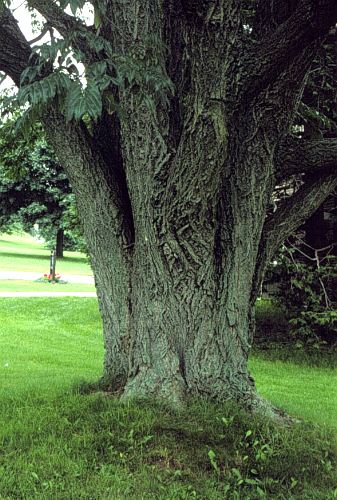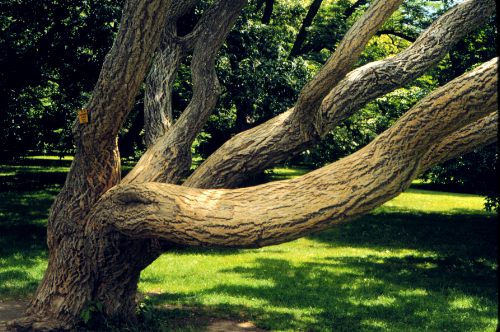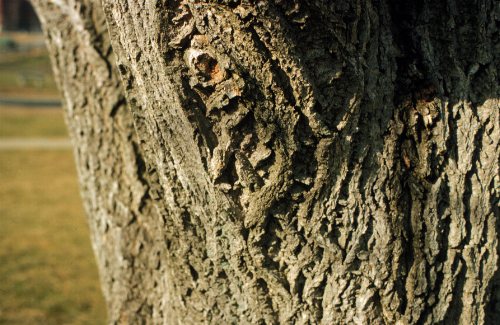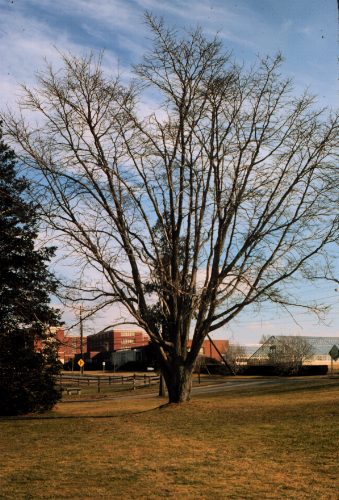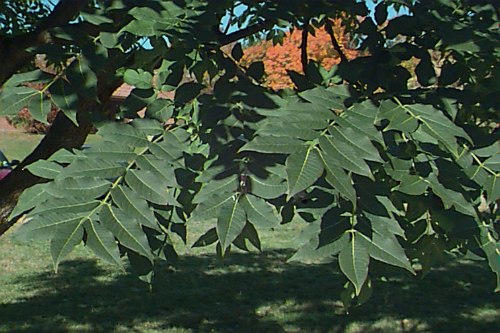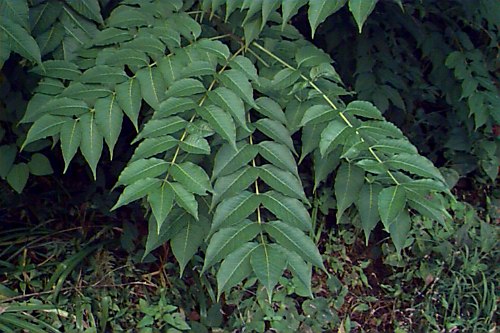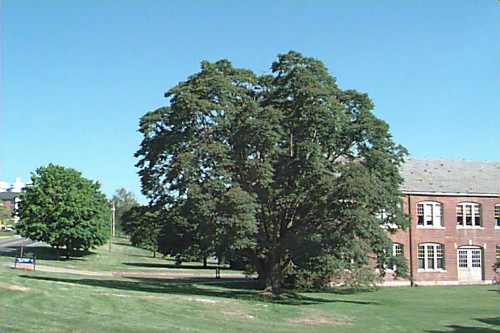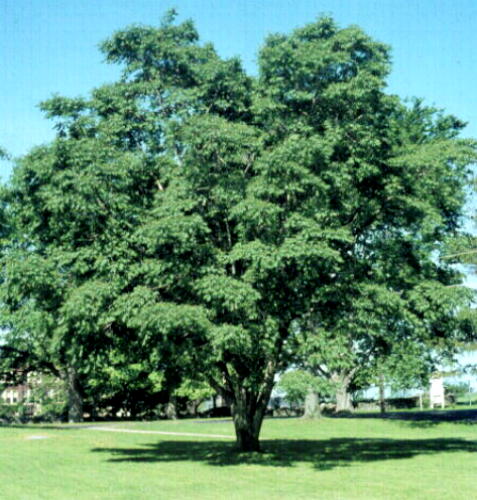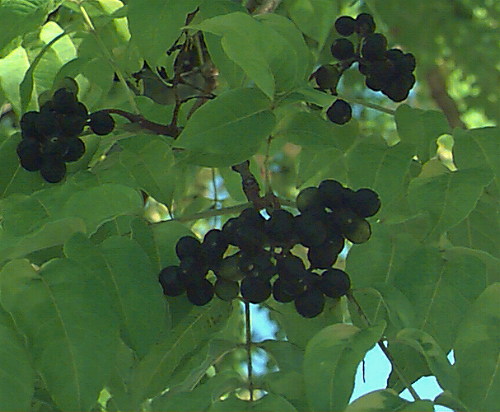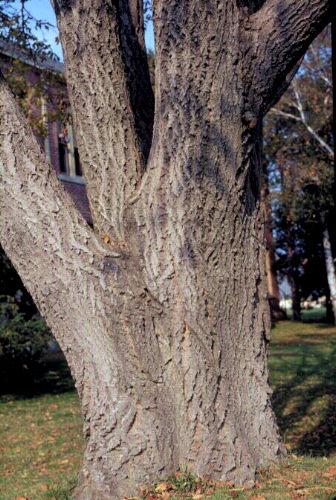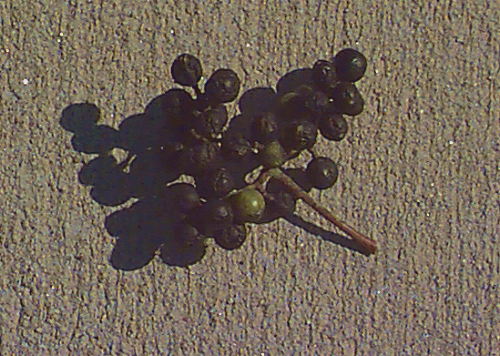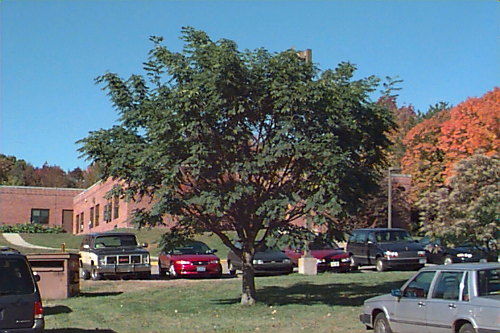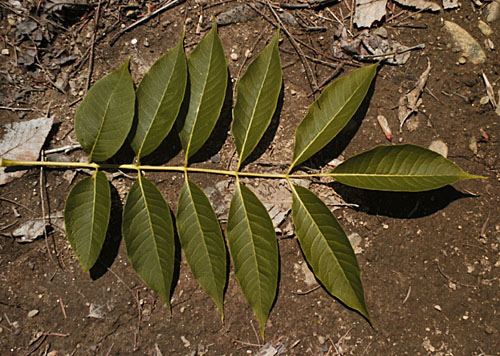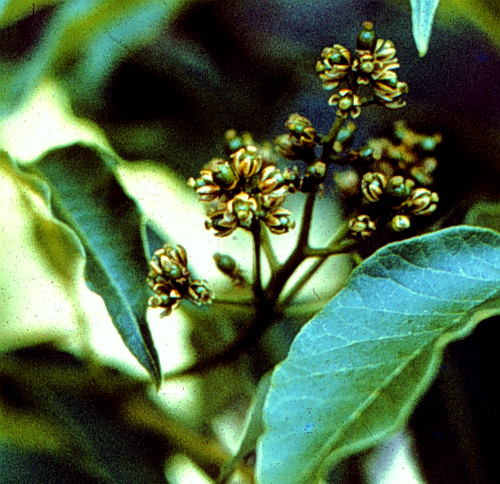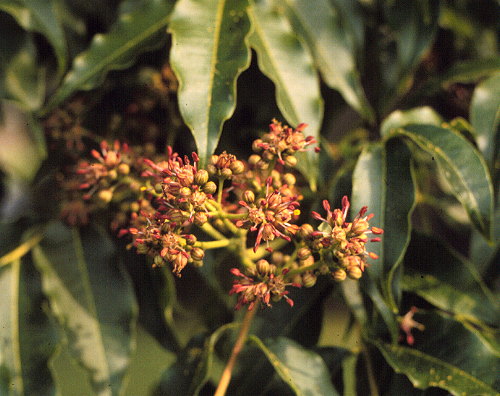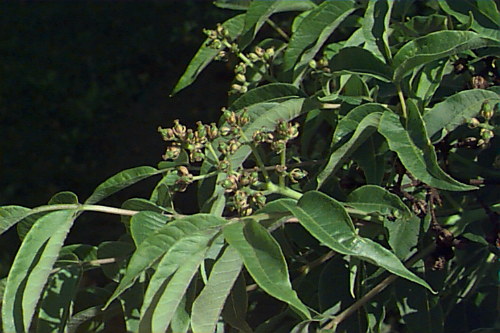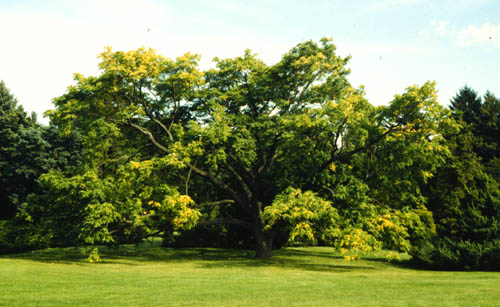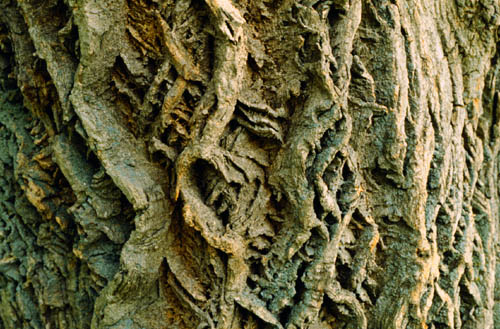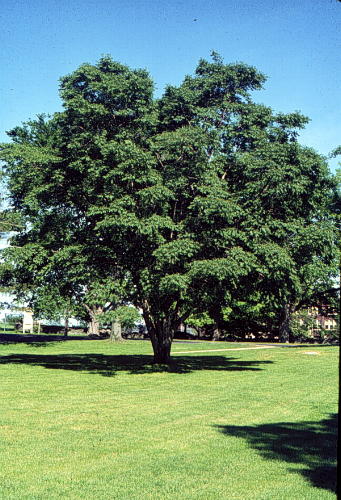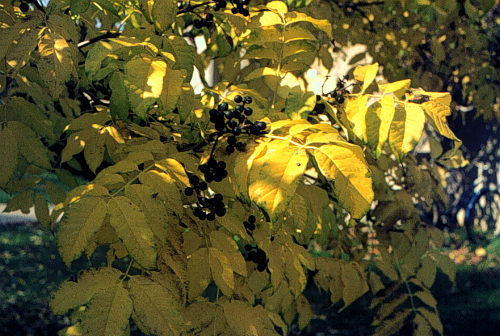Phellodendron amurense
Amur Corktree
Rutaceae
ExpandHabitat
- native to China, Manchuria and Japan
- hardy to zone 4, probably the warmer parts of zone 3, as well
- Special Note: This species has demonstrated an invasive tendency in Connecticut, meaning it may escape from cultivation and naturalize in minimally managed areas. For more information, .
Habit and Form
- a medium-sized deciduous tree
- grows to between 30' and 45' tall
- generally trees are significantly wider than they are tall
- branching is broad spreading
- short main trunk and several large main branches
- trees frequently become almost flat-topped with maturity
- picturesque branching
Summer Foliage
- leaves are opposite and pinnately compound
- 5 to 11 leaflets per leaf
- leaves are 10" to 15" long
- leaflets are 2.5" to 4.5" long
- leaf color is a very nice, lustrous dark green
- crushed foliage gives off a turpentine odor
Autumn Foliage
- yellow and short-lived
- not especially showy
Flowers
- dioecious, with male and female plants
- flowers are small and greenish-yellow
- not ornamentally significant
- blooms in late May and early June
Fruit
- pea-sized fruits that change from green to black
- aromatic when crushed
- only on female plants
- held in clusters
Bark
- conspicuously ridged and furrowed
- light gray color
- bark is soft and cork-like to the touch
- attractive in a subtle way
Culture
- easily transplanted
- tolerant of many soil and pHs
- full sun
- tolerant of drought and pollution
- very pest free
- perhaps not as tolerant and tough as has been reported
Landscape Use
- shade tree
- specimen
- for picturesque form
- for interesting bark
Liabilities
- fruit can be a bit of a litter problem with female plants
- best to plant male trees
- tends to self sow
- although medium-sized as far as height, it needs room to accommodate the width
- not always readily available
ID Features
- leaf scars are horseshoe-shaped or toilet seat-shaped
- short main trunk with wide spreading branches
- pinnately compound leaves
- corky, ridged and furrowed bark
- green or black pea-sized fruit
- aromatic foliage when crushed
Propagation
- by seed
Cultivars/Varieties
'His Majesty', 'Macho' and 'RNI 4551' (Shademaster®) - These are male selections which produce no weedy seedlings or fruit mess. They can, however, pollinate female plants. On the whole, they have spreading growth habits to 40' tall and wide with lustrous foliage.

